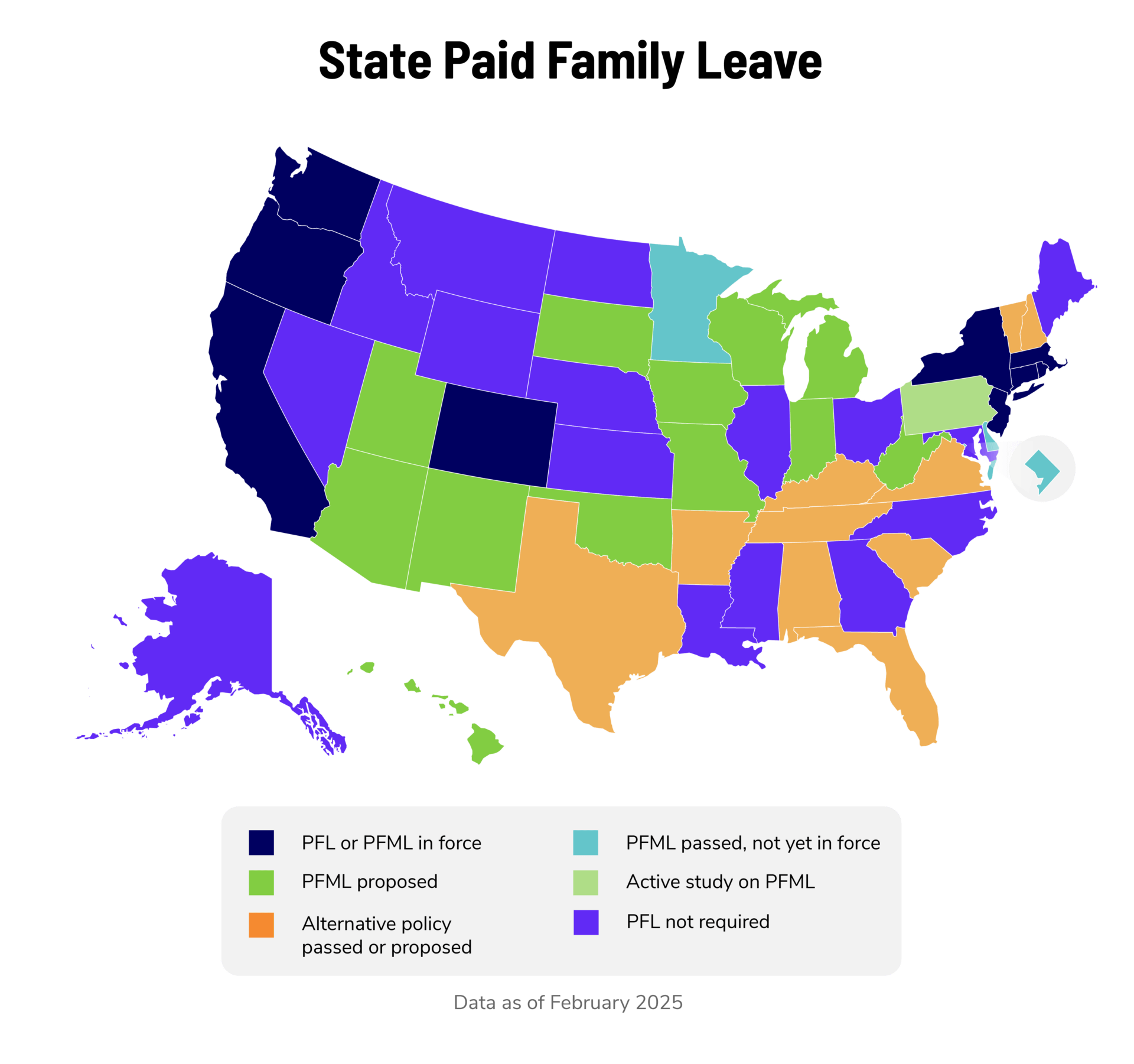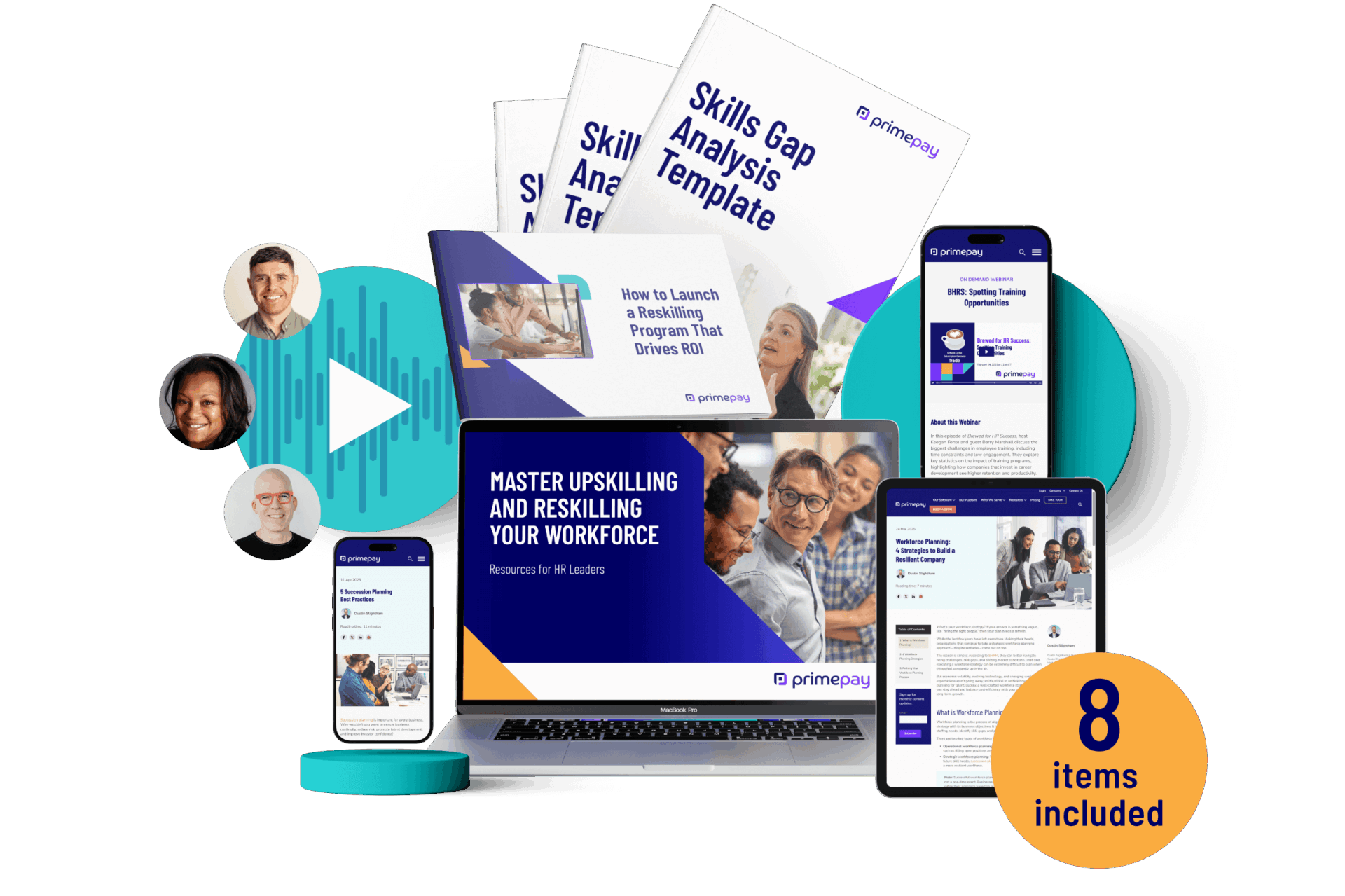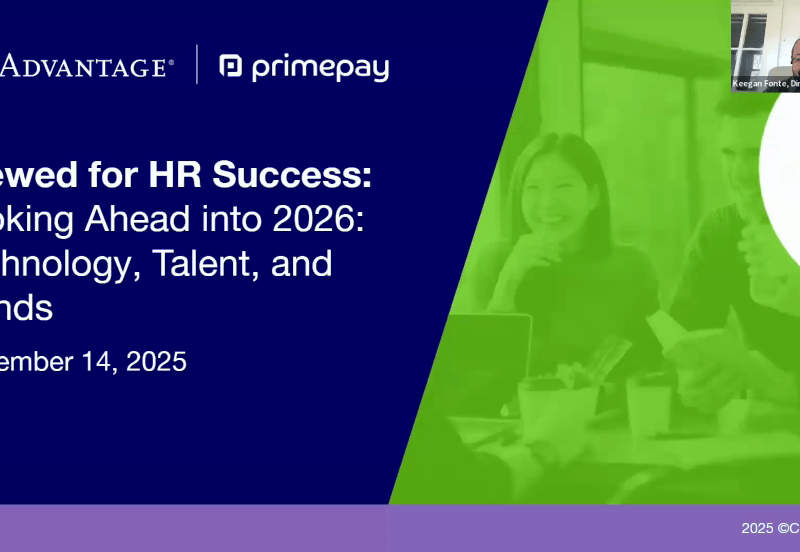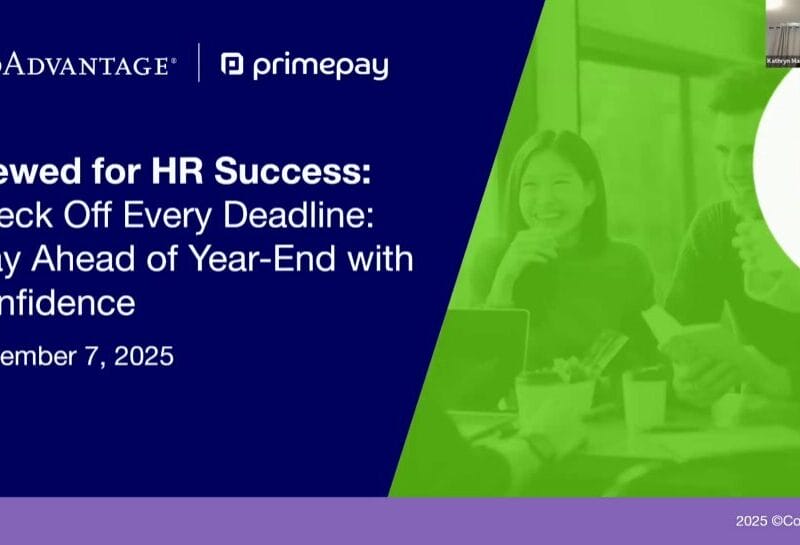Although the Family and Medical Leave Act (FMLA) may seem beneficial at first glance, it creates a significant problem. Many employees can’t afford to take 12 weeks of unpaid leave, so they choose to either switch jobs (to a company with additional benefits) or return to work before they’re physically ready.
That’s where state programs step in. Unlike FMLA, several states have implemented their own paid family leave (PFL) policies, ensuring employees receive partial wage replacement during their time off.
Navigating the differences between state and federal leave can be challenging for HR and finance leaders. Policies vary in terms of eligibility, duration, and benefits offered. Understanding which states have paid family leave programs—and how they work—is critical to staying compliant and supporting your workforce effectively.
State vs. Federal Leave
When it comes to paid family leave, it’s essential to understand the difference between state and federal policies. FMLA has existed since 1993 and offers eligible employees up to 12 weeks of unpaid leave for family or medical reasons.
While FMLA is a significant protection, it’s unpaid, leaving many employees unable to take advantage of it.
While federal protections offer consistency, state-level programs often provide more robust, employee-friendly options.
In 2025, these state programs are more important than ever. According to the National Partnership for Women & Families, “state-level paid family leave programs improve access to leave for low-income workers, who are least likely to have access to paid time off.”
Unfortunately, not all states have their own programs to support residents. However, those like California, New York, and New Jersey have already set a standard, and new states are joining the list to provide broader access to paid leave.
Paid Family Leave vs. Paid Family and Medical Leave
State laws and opt-in programs can offer Paid Family Leave and Paid Family and Medical Leave.
While the terms “Paid Family Leave” (PFL) and “Paid Family and Medical Leave” (PFML) are sometimes used interchangeably, they’re not the same. The distinction lies in the scope of coverage.
Paid Family Leave typically focuses on family-related events, such as:
- Bonding with a newborn, adopted, or foster child
- Caring for a seriously ill family member
- Supporting a family member during active military duty
Paid Family and Medical Leave expands that coverage to include the employee’s own medical needs. This could mean taking time off to recover from a major surgery, undergo treatment for a chronic condition, or manage other personal health issues.
For example, Washington State’s PFML program combines both family and medical leave under one umbrella, offering up to 12 weeks of leave for qualifying events (or 16 weeks if both types of leave are used). Contrast that with New York, which provides Paid Family Leave but does not cover an employee’s personal medical leave under the same program.
Why does this distinction matter?
From an HR and financial perspective, understanding these nuances can help employers prepare for the costs and administrative requirements associated with leave programs. For employees, knowing what’s covered ensures they can plan effectively for time away from work without financial stress.
As states continue to evolve their programs, the line between PFL and PFML may blur, but for now, it’s a key detail worth noting when reviewing policies and compliance requirements.
States Offering Paid Family Leave
As of 2025, several states and territories have implemented Paid Family Leave programs. This ensures employees have access to wage replacement during critical life events. Below are key details for each state.

California
California has been a leader in paid family leave since 2004. The state provides up to eight weeks of partial wage replacement to eligible employees through the Paid Family Leave program. Funded by employee payroll contributions, this program covers bonding with a new child, caring for a seriously ill family member, and military exigency. Benefits replace approximately 60-70% of wages, depending on income.
Colorado
Colorado’s Family and Medical Leave Insurance (FAMLI) program launched in 2024. Employees can take up to 12 weeks of paid family or medical leave, with wage replacement of up to 90% for lower earners. Like Oregon, this program is funded through shared contributions.
Connecticut
Connecticut began offering paid family leave in 2022 under the Paid Leave Authority. Employees can take up to 12 weeks of leave at a wage replacement rate of up to 95%, capped at 60 times the minimum wage. Events covered include child bonding, caregiving for family members, and personal medical needs.
Delaware
Effective in 2025, Delaware’s Paid Leave law offers up to 12 weeks of paid family leave for bonding with a child, caregiving for family members, or military-related needs. The program will be funded by payroll contributions, specifically on wage replacement and caps varying by income.
Washington, D.C.
The District of Columbia offers one of the most robust programs, providing up to 12 weeks of paid family leave, 12 weeks of medical leave, and two weeks for prenatal care. Benefits replace up to 90% of wages for lower-income workers and are funded by employer payroll taxes.
Maine
Maine’s paid family leave program will take effect in 2025. Employees can receive up to 12 weeks of paid leave, covering family caregiving, child bonding, and personal medical issues. The program will be funded through shared payroll contributions, with wage replacement percentages to be finalized.
Maryland
Maryland’s Family and Medical Leave Insurance (FAMLI) program, effective in 2025, will provide up to 12 weeks of paid leave for eligible events, including caregiving, bonding, and personal medical needs. Wage replacement will range from 50-90% based on income, funded by joint contributions from employers and employees.
Massachusetts
Massachusetts’ PFML program offers up to 12 weeks of paid family leave and 20 weeks of paid medical leave for personal health conditions. Benefits replace up to 80% of wages for lower-income workers, with a cap for higher earners. The program is funded through contributions shared between employees and employers.
Minnesota
Minnesota’s Paid Family and Medical Leave program begins in 2025, offering up to 12 weeks of family leave, 12 weeks of medical leave, or 20 weeks combined. Wage replacement rates range from 55-90%, capped at $1,256 per week. Funding is through shared contributions split between employers and employees.
New Hampshire
New Hampshire offers a voluntary Paid Family and Medical Leave Insurance program, providing up to six weeks of leave with 60% wage replacement. While employers aren’t required to participate, employees in non-participating companies can opt-in directly through the state’s private insurance partner.
New Jersey
New Jersey provides 12 weeks of paid family leave under its Family Leave Insurance program. Funded by employee contributions, it offers a benefit of up to 85% of the employee’s average weekly wage, capped at a maximum amount. Eligible events include child bonding and caregiving for a seriously ill family member.
New York
New York’s Paid Family Leave program offers up to 12 weeks of leave with wage replacement at 67% of the employee’s average weekly wage, capped at a statewide average. The program, also employee-funded, supports bonding with a new child, caring for a family member with a serious health condition, or helping during a family member’s active military duty.
Oregon
Oregon’s Paid Leave Oregon program is relatively new. It provides up to 12 weeks of paid leave, with an additional two weeks for pregnancy-related medical issues. The program replaces up to 100% of wages for low-income workers, with a sliding scale for higher earners. Funding comes from a combined employee and employer contribution model.
Rhode Island
Rhode Island’s Temporary Caregiver Insurance (TCI) program provides six weeks of leave for caregiving and bonding purposes. Benefits replace approximately 60% of wages and are funded by employee payroll contributions. While the duration is shorter than in other states, Rhode Island remains a pioneer in paid leave policies.
Vermont
Vermont is launching its first paid family leave program in 2025. Employees will be eligible for up to six weeks of wage replacement, with benefits covering caregiving and bonding events. Funded by payroll contributions, the program aims to expand coverage and duration in subsequent years.
Washington
Washington State’s Paid Family and Medical Leave (PFML) program combines family and medical leave benefits. Employees can access up to 12 weeks of paid leave, with an additional four weeks for pregnancy complications. Wage replacement is up to 90% of weekly earnings, funded by both employer and employee contributions.
Know the Laws to Stay Compliant
Understanding FMLA and state family leave programming is essential for employers and HR leaders to stay compliant while supporting their workforce. Even small businesses must comply with certain FMLA requirements and should ensure they fully understand them.
Each state has unique laws, contribution requirements, and benefit structures, making it crucial to stay updated on regulations where your organization operates or your employees live.
Non-compliance can lead to penalties, legal issues, and employee dissatisfaction. Partnering with experts, using compliance and payroll tools, and maintaining open communication with employees can help you navigate these laws seamlessly. By staying informed, you can foster a supportive workplace while meeting your legal obligations.









